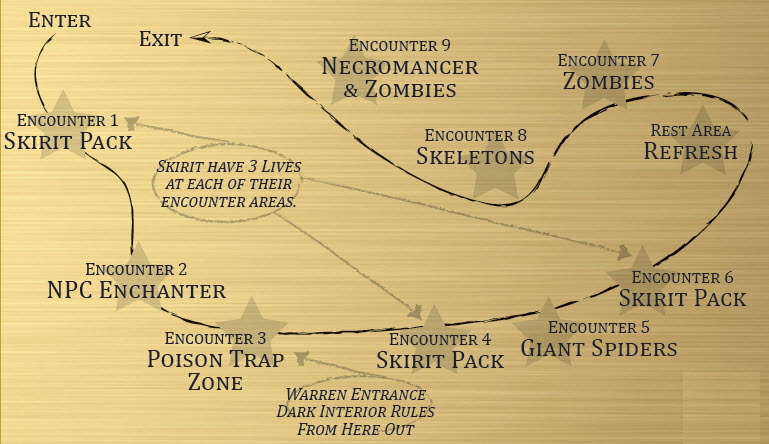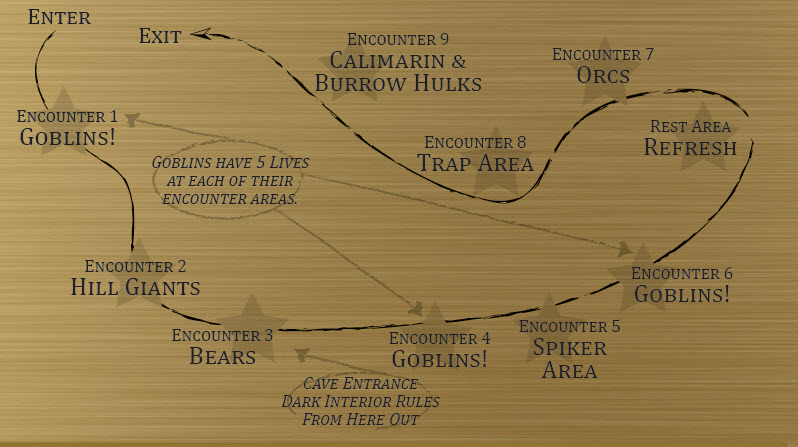Free-Form vs. Linear Quests
There are two major categories all Quests fall into, the Free-form Quest and the Linear Quest. Both have strengths and weaknesses, but managed properly, either can provide a fulfilling day of fighting and role-playing. And we're talking about REAL Quests, not battlegames or other scenarios disguised as a Quest...
The Free-form Quest
This is the type of Quest where everyone has a part, and plays that part for the entire game. Players portray their classes, a Monster-player Troll stays a Troll and the NPC Innkeeper maintains that role for the entire day. Encounters are usually set up across the playing area in no particular order, allowing players to roam freely from place to place in search of clues or just a good scuffle. These Quests should be designed so they can be solved without having to resort to the “do this first, do this next, then this, and finally fight the Monster to win” mentality (see Linear Quest). The greatest strength of the Free-form Quest is versatility; situations can be solved or experienced in any order, allowing for a great range of experiences and tales between Questors. Free-form Quests are far more work for the Reeves, however, as several areas may require their attention at once, or the conditions in one area might have unforeseen consequences on other areas. Good advice: Get some walkie-talkies!
The example outlines the discovery of a Skirit Warren near the heroes home village. Encounters 1, 4 and 6 are fights against the rat men. Encounter 2 is a helpful enchanter. Encounter 3 is an obstacle course of poison traps that leads to the warren entrance. Once "inside" the attacks increase until the heroes arrive at the Refresh Area. After a short rest, the enemies become lesser undead until they reach the end, where it is discovered an evil Necromancer is pulling all the strings.

The Linear Quest
Far simpler to manage on a small scale, the Linear Quest is more akin to tabletop role-playing than the Free-form Quest. The Reeve sets up a series of encounters and walks with a team of Questors from one zone to the next, describing things all along the way. One team of Monsters can actually challenge multiple teams and play multiple parts, because they only encounter one group at any given time. The Monsters fight in one area, and then move ahead of the questors to prepare for the next. While this might seem an extremely basic way of questing, it is the best way to run a quest for groups of 20 people or less. Also, the Linear Quest presents a much greater opportunity for players to get good information and descriptions from the Reeve, enhancing the fantasy role-play atmosphere in ways that a Free-form Quest never could. The best part of this kind of game is the near-total control the Reeve has over the action, allowing for changes to be made on the spot and giving the players an instant information source.
Using the same set of trails and same basic locations, a creative quest-master should have no problem inventing a new set of challenges to present to players on a regular basis. All it takes is a change of theme and a bit of imagination - and what was a Skirit Warren last weekend will be a Goblin City this week, and next Saturday? The crypt of a risen Necromancer? The Halls of a twisted Dwarf King sick with gold lust? The stories are endless.
